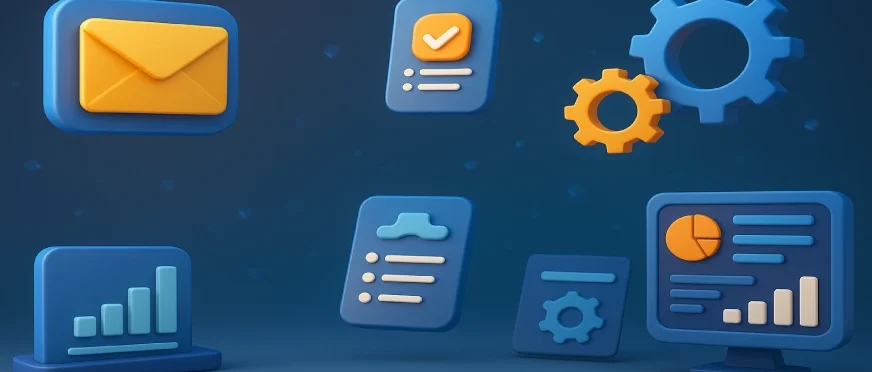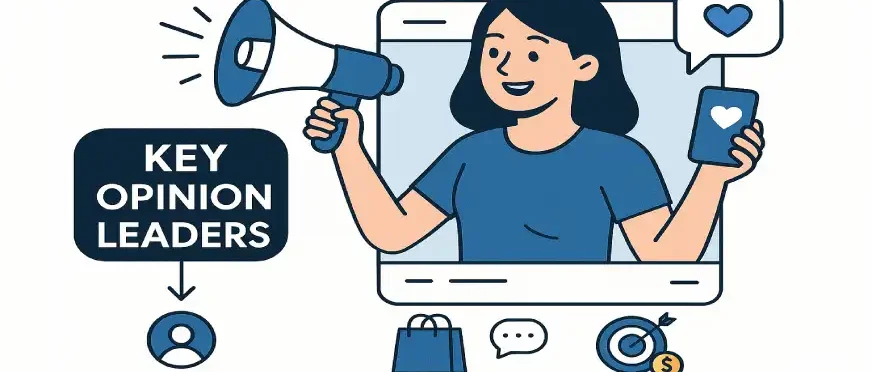Artificial Intelligence (AI) has completely reshaped how businesses connect with audiences online. From predicting customer behaviour to delivering personalised experiences, AI tools are making websites smarter, faster, and more engaging.
To leverage AI in digital marketing for your website, we have listed some smart and implementable strategies. Each method comes with practical tips and real-life examples so you can put AI to work without feeling overwhelmed.
10 Ways to Use in AI Iin Digital Marketing
1. Personalised Content Recommendations
AI analyses browsing history, click patterns, and purchase behaviour to suggest products, articles, or services that match each visitor’s interest.
Example: Amazon’s “You may also like” section boosts conversions by showing items similar to your recent views.
Tips:
- Use tools like Adobe Target or Optimizely to automate recommendations.
- Segment audiences (new visitors, repeat buyers, subscribers) for higher relevance.
- Keep recommendation lists short to avoid overwhelming visitors.
2. AI-Powered Chatbots for Instant Customer Support
AI chatbots can answer FAQs, recommend products, and even take orders—24/7. They reduce wait times and improve customer satisfaction.
Example: Sephora’s chatbot helps customers choose beauty products based on skin type and preferences.
Tips:
- Train your bot with your brand’s tone and most common queries.
- Provide an option to switch to a human agent for complex issues.
- Analyse chatbot conversations to improve responses over time.
Also Read, 10 Top Digital Marketing Agencies in the World
3. Predictive Analytics for Better Campaign Planning
Predictive analytics uses AI to forecast customer needs, market trends, and seasonal demand. This helps you plan marketing campaigns more effectively.
Example: Netflix uses predictive analysis to recommend shows and decide what content to produce next.
Tips:
- Combine predictive tools with Google Analytics data.
- Update your forecasting model regularly with new customer data.
- Use insights to prepare personalised offers before customers even ask.
4. Automated Email Marketing Campaigns
AI improves email marketing by optimising subject lines, sending times, and personalised content.
Example: Grammarly’s weekly performance emails are tailored to each user’s writing habits.
Tips:
- Use AI-powered platforms like Mailchimp or HubSpot.
- Segment your email list by customer behaviour and purchase history.
- A/B test subject lines and calls-to-action for best results.
5. Voice Search Optimisation
With the rise of smart speakers and voice assistants, optimising your site for voice search is crucial. AI helps identify conversational keywords and question-based queries.
Example: Starbucks’ voice-ordering feature lets customers order coffee hands-free.
Tips:
- Add FAQ-style content targeting “who,” “what,” “where,” “how” questions.
- Focus on natural, conversational language rather than short keywords.
- Ensure your website loads fast—voice assistants favour quick answers.
6. Smart SEO with AI Tools
AI can analyse competitors, find keyword gaps, and suggest on-page optimisations. It also tracks ranking changes in real-time.
Example: Tools like SurferSEO and SEMrush AI offer keyword clusters and content scoring.
Tips:
- Update content based on AI suggestions at least once a quarter.
- Avoid overusing keywords—focus on readability and flow.
- Use AI for topic research to stay ahead of trends.
7. AI-Enhanced Ad Targeting
AI analyses user behaviour, demographics, and interests to deliver ads to the most relevant audience. This increases ROI and reduces wasted ad spend.
Example: Facebook’s lookalike audiences help brands find new customers similar to their existing ones.
Tips:
- Test multiple ad creatives to see what resonates most.
- Use retargeting ads for users who visited but didn’t purchase.
- Adjust targeting settings regularly to prevent ad fatigue.
8. Content Creation Assistance
AI tools can help draft blog posts, ad copy, or social media captions, saving time for marketers.
Example: Canva’s Magic Write assists in generating catchy captions for Instagram posts.
Tips:
- Always review AI-generated content for accuracy and tone.
- Use AI to create outlines and ideas, but keep final editing human-led.
- Mix AI-created content with original insights for authenticity.
9. Image & Video Recognition for Marketing
AI can scan images and videos to identify products, logos, or even emotions—helping brands track online mentions and user-generated content.
Example: Pinterest’s visual search tool lets users find similar products just by uploading a picture.
Tips:
- Tag and label your visual assets properly to improve discoverability.
- Use image recognition to identify influencers already promoting your brand.
- Analyse customer-generated visuals to see how they use your product.
10. AI in A/B Testing for Website Optimisation
AI speeds up A/B testing by analysing results faster and making real-time changes.
Example: Google Optimize runs AI-driven experiments to determine the most effective page designs.
Tips:
- Track key performance indicators (KPIs) like conversion rate and bounce rate.
- Test one major change at a time for clear results.
- Keep variations simple—too many differences make data less reliable.
Final Thoughts
From personalising user experiences to optimising ad targeting, AI in digital marketing for your website offers endless opportunities to improve results.
The key is to start small, test what works, and gradually integrate AI into your marketing strategy. With the right tools and approach, AI can turn your website into a smart, customer-focused success platform.




